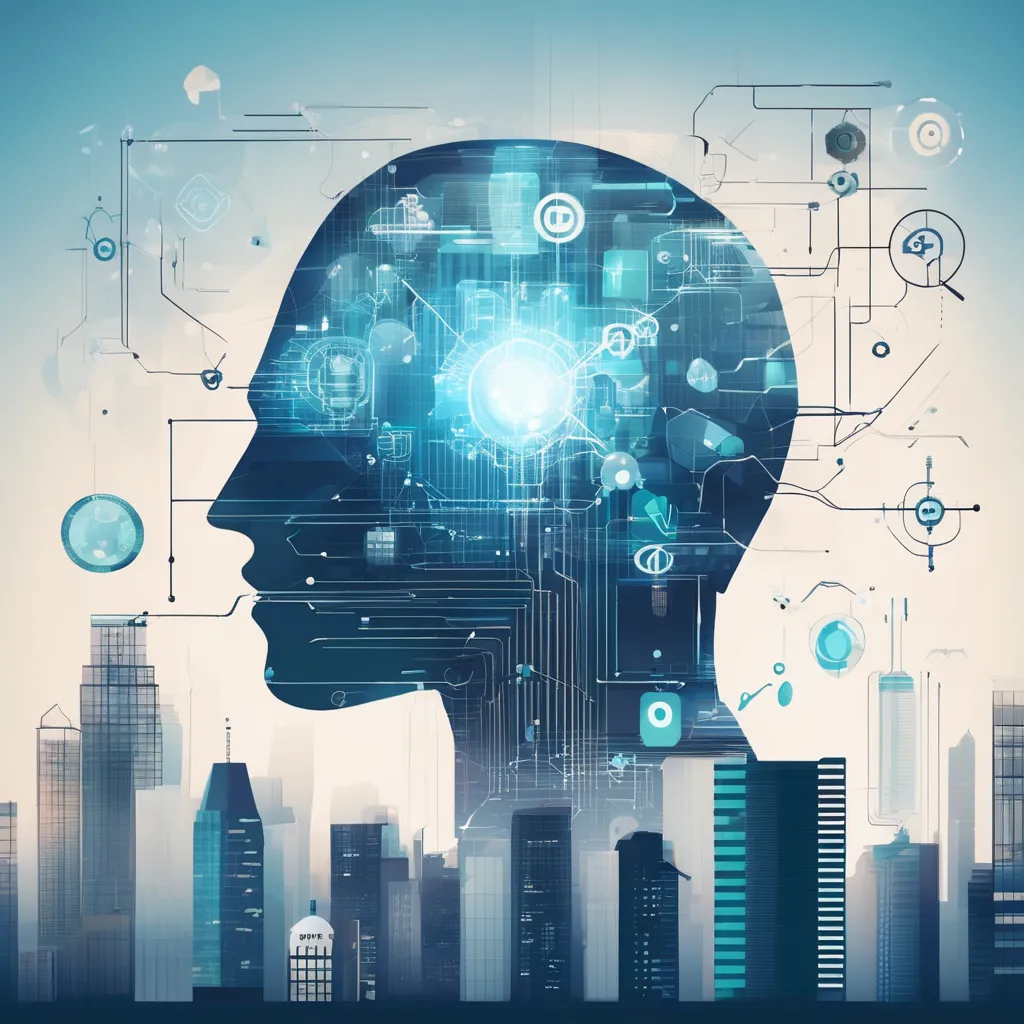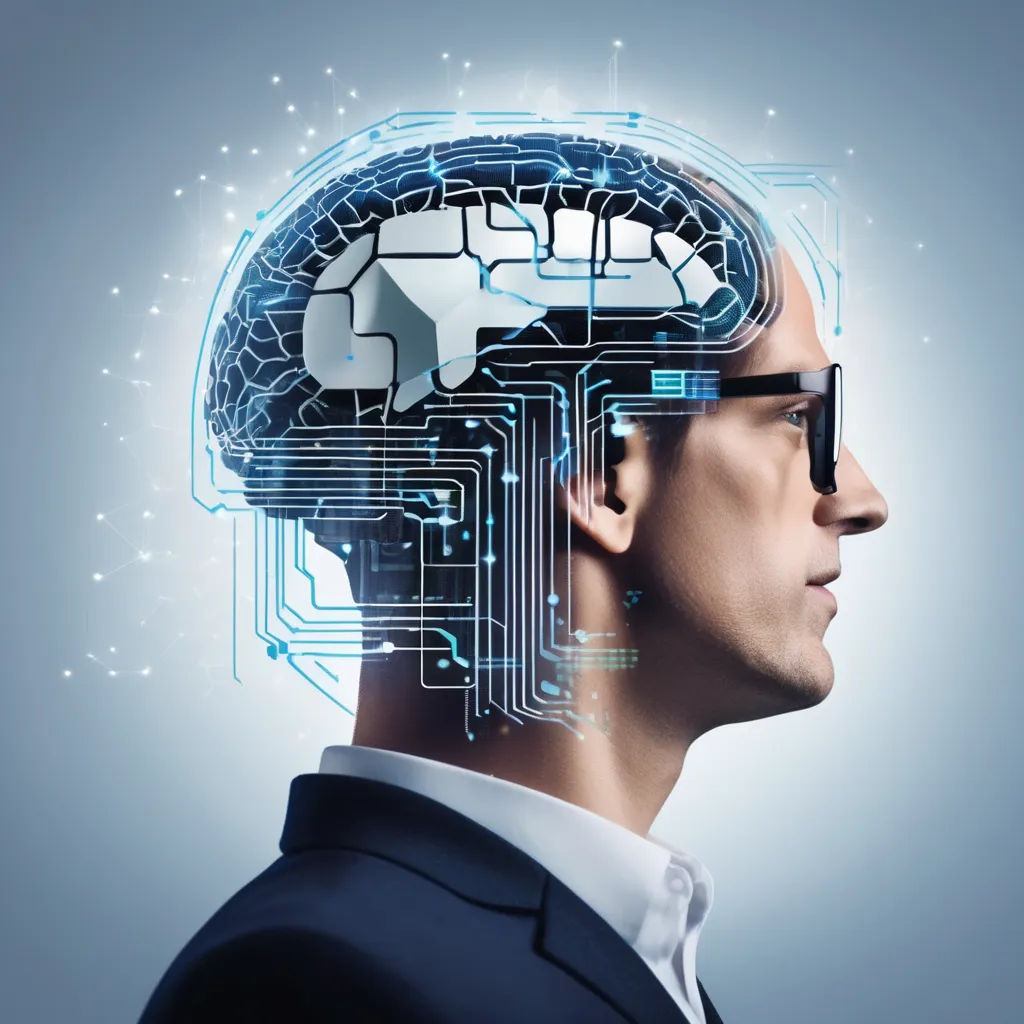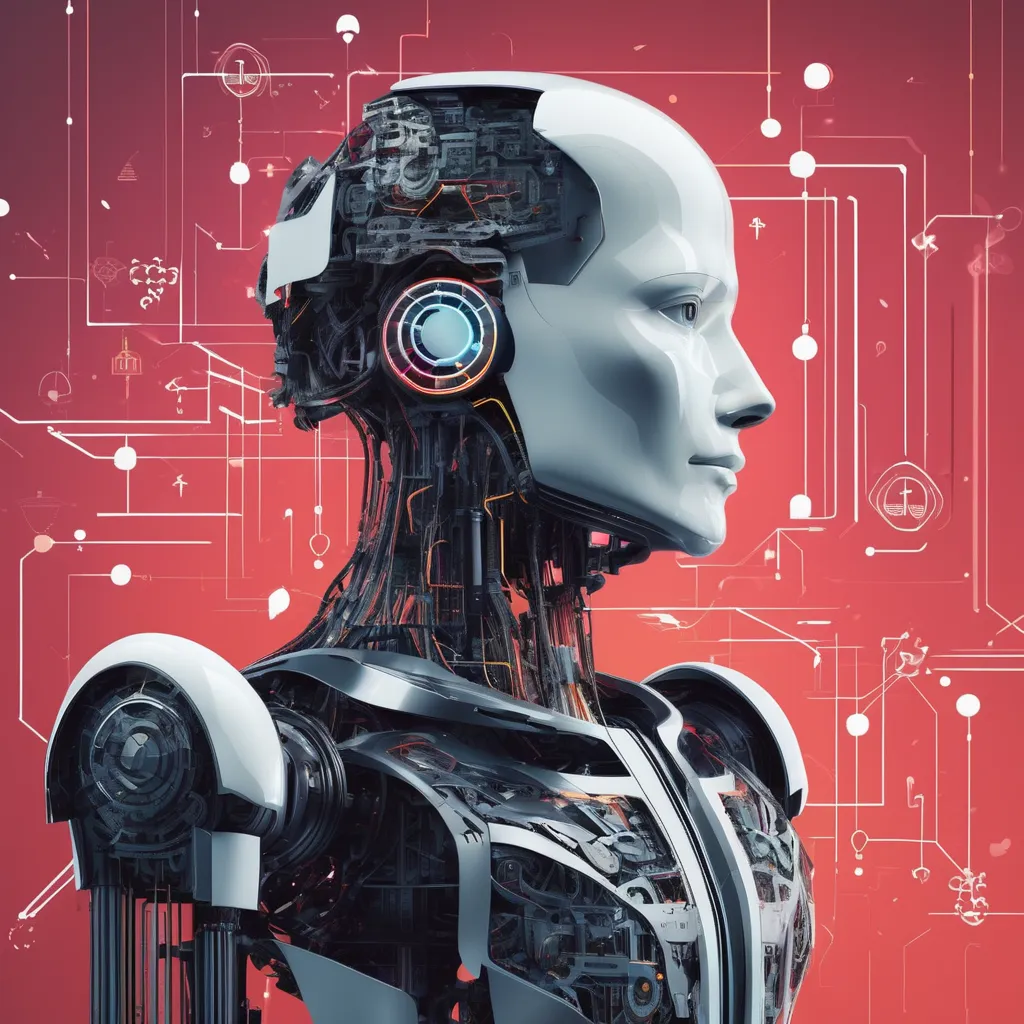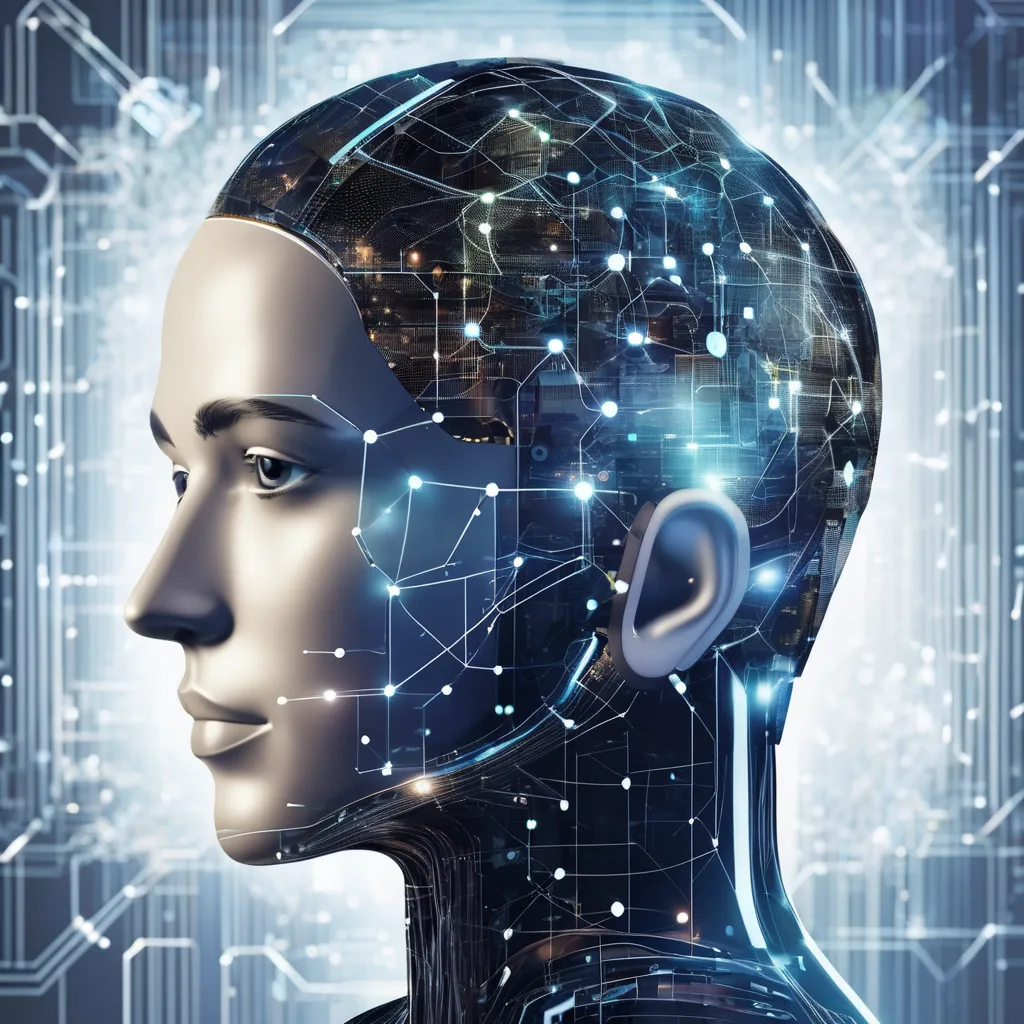The Potential for Unintended Consequences in AI Development
Artificial Intelligence (AI), a rapidly evolving field, has sparked numerous technological advancements across various sectors. However, as with any powerful tool, AI’s development comes with potential risks and unintended consequences. This extensive academic exploration delves into the multifaceted challenges and considerations that arise as AI continues to shape our world.
The Complexity of Predicting AI Outcomes
Predicting the exact outcomes of AI systems can be profoundly complex due to the dynamic and non-linear nature of these technologies. AI’s decision-making processes often involve layers of algorithms and data interactions that defy straightforward analysis. For instance, machine learning models, particularly deep learning variants, operate through intricate neural networks that adapt and evolve with exposure to new data, leading to behaviors that may not be anticipated by their creators.
Consider the scenario where an AI model trained on historical data for stock market predictions suddenly encounters an unprecedented economic event. The model’s responses could diverge significantly from expected patterns, causing unforeseen market reactions. This unpredictability underscores the necessity for continuous monitoring and validation of AI systems to mitigate risks.
Furthermore, AI’s propensity to learn and adapt in ways that are not entirely transparent complicates efforts to identify and correct potential issues preemptively. This opacity in AI behavior necessitates advanced interpretability techniques and robust validation frameworks to understand and manage the complexities effectively.
Emerging Ethical Dilemmas in Artificial Intelligence
The rise of AI technologies has introduced novel ethical dilemmas that challenge existing moral and societal frameworks. AI systems, by their nature, frequently involve making decisions that impact human lives, ranging from medical diagnoses to criminal sentencing. The ethical implications of these decisions can be profound, particularly when AI models inadvertently incorporate biases present in their training data.
For instance, an AI-driven hiring platform might inadvertently favor certain demographic groups over others if the training data reflects historical biases in hiring practices. This scenario highlights the ethical imperative to ensure fairness and equity in AI systems. Addressing these ethical challenges requires stakeholders to critically examine the data sources, algorithms, and decision-making processes underpinning AI technologies.
A multifaceted approach is needed to navigate these ethical dilemmas, including interdisciplinary collaboration between technologists, ethicists, and policymakers. Ethical AI design principles must prioritize transparency, accountability, and inclusivity to foster trust and ensure that AI benefits are equitably distributed across society.

Assessing the Risks of AI Systems
Risk assessment in AI development is crucial to identifying and mitigating potential hazards, both anticipated and unforeseen. Effective risk management involves a comprehensive understanding of the AI system’s deployment context, potential vulnerabilities, and the impacts of erroneous outputs or malfunctions. This necessitates a systematic approach to evaluate the risks associated with AI technologies throughout their lifecycle.
One methodology for assessing the risks includes scenario planning, where developers envision various potential outcomes and their implications. This forward-looking approach can help identify latent risks before they manifest in real-world applications. For instance, an AI system designed for autonomous vehicle navigation must be rigorously tested under diverse environmental conditions to ensure robustness and reliability.
Additionally, establishing rigorous testing and validation protocols is essential for assessing AI risks. These protocols should encompass edge cases and rare events that might expose weaknesses in the AI system. Verification processes must be iterative and adaptive, evolving alongside the AI technology to continuously address emerging risks.
Unintended Consequences of Machine Learning Algorithms
Machine learning algorithms, while powerful, can lead to unintended consequences if not designed and managed carefully. These unintended effects often stem from the algorithms’ reliance on historical data and their inherent complexity. One notable example is the phenomenon of algorithmic bias, where biased training data leads to discriminatory outcomes.
Consider a machine learning model used for credit scoring. If the training data disproportionately represents particular demographics, the resulting algorithm may inadvertently perpetuate existing inequalities by unfairly disadvantaging certain groups. Addressing such unintended consequences requires a concerted effort to ensure data diversity and implement bias mitigation techniques.
Another potential issue arises from the optimization objectives embedded within machine learning algorithms. Optimizing for performance metrics such as accuracy or efficiency can inadvertently lead to adverse side effects. For example, an algorithm designed to maximize click-through rates for online advertisements might develop manipulative strategies that prioritize engagement over user well-being.
To prevent these unintended consequences, it is essential to adopt a holistic approach to AI system design that incorporates ethical considerations and continuous monitoring. Transparency in algorithmic decision-making processes and proactive measures to address biases are critical components of responsible AI development.
Navigating the Overlooked Pitfalls in AI Development
AI development encompasses various overlooked pitfalls that can have far-reaching implications if not adequately addressed. One such pitfall is the misalignment between AI objectives and societal values. AI systems optimized for specific performance metrics may inadvertently contravene broader ethical and social goals.
For instance, consider AI-driven content recommendation systems on social media platforms. These algorithms often prioritize user engagement, leading to the amplification of sensationalist or polarizing content. This misalignment can exacerbate societal divisions and contribute to the spread of misinformation.
Another frequently overlooked pitfall is the environmental impact of AI development. Training large-scale AI models, particularly deep learning systems, requires substantial computational resources, resulting in significant energy consumption and carbon emissions. Addressing this pitfall necessitates the adoption of more sustainable AI practices and the development of energy-efficient algorithms.
Moreover, the rapid pace of AI development can outstrip regulatory and ethical frameworks, leaving gaps in oversight and accountability. Navigating these pitfalls involves fostering interdisciplinary dialogue, promoting transparency, and ensuring that AI development aligns with societal values and sustainability goals.
The Impact of AI on Privacy and Security
AI technologies present considerable challenges to privacy and security, raising concerns about data protection and unauthorized access. The collection, processing, and analysis of vast amounts of data by AI systems can compromise individuals’ privacy and expose sensitive information to potential misuse.
For example, the deployment of AI in surveillance systems can infringe on individuals’ privacy rights, especially when coupled with facial recognition technologies. These systems can track and monitor individuals without their consent, raising significant ethical and legal concerns. Ensuring robust data protection measures and obtaining informed consent are critical steps in safeguarding privacy.
Additionally, AI systems can introduce new security vulnerabilities, particularly when leveraged by malicious actors. Adversarial attacks, where attackers manipulate input data to deceive AI algorithms, pose significant threats to system integrity. For instance, an attacker could manipulate images to bypass facial recognition security systems, leading to unauthorized access.
Addressing these concerns requires a multi-faceted approach that includes developing secure AI architectures, implementing privacy-preserving techniques, and establishing clear regulatory guidelines to govern AI’s use. Continuous monitoring and updating of security protocols are essential to protect against evolving threats.
Exploring Bias and Fairness in AI Models
Bias and fairness in AI models are critical issues that require rigorous examination and remediation. AI models trained on biased data can perpetuate and even amplify existing societal inequities, leading to discriminatory outcomes. Ensuring fairness in AI involves addressing both data-related biases and algorithmic biases.
Data-related biases often stem from historical inequalities reflected in the training datasets. For example, a facial recognition system trained predominantly on images of lighter-skinned individuals may exhibit inferior performance for darker-skinned individuals. Achieving fairness involves curating diverse and representative training datasets and continuously auditing data quality.
Algorithmic biases can arise from the design and implementation of machine learning models. Models optimized for specific performance metrics may inadvertently favor certain groups over others. Techniques such as fairness-aware machine learning and bias mitigation algorithms can help address these biases and promote equitable outcomes.
Stakeholders must prioritize transparency and accountability in AI development to tackle bias and fairness effectively. Clear documentation of data sources, model design, and ethical considerations can foster public trust and ensure that AI systems are deployed responsibly.

The Societal Implications of Autonomous Systems
Autonomous systems, powered by AI, hold significant potential to transform various industries and aspects of daily life. However, their deployment also raises profound societal implications that must be carefully considered. Autonomous vehicles, for example, promise enhanced safety and efficiency but also pose challenges related to liability, ethics, and societal acceptance.
One societal implication of autonomous systems is the potential displacement of human workers. Automation can lead to job losses in certain sectors, necessitating strategies to manage workforce transitions and mitigate the impacts on affected communities. Investing in reskilling and upskilling programs can help workers adapt to changing labor markets.
Ethical considerations also arise in the context of decision-making by autonomous systems. For instance, in situations where an autonomous vehicle must make split-second decisions to avoid an accident, ethical dilemmas emerge regarding prioritization of the safety of passengers versus pedestrians. Addressing these dilemmas requires the development of ethical frameworks and guidelines to inform autonomous decision-making.
Moreover, societal acceptance of autonomous systems hinges on public trust and confidence. Transparent communication about the capabilities, limitations, and ethical considerations of autonomous systems is crucial to fostering societal acceptance and ensuring their responsible integration into daily life.
Long-Term Effects of AI on Employment
The long-term effects of AI on employment are a topic of considerable debate and concern. AI-driven automation has the potential to reshape labor markets, leading to both opportunities and challenges. While AI can enhance productivity and create new job roles, it can also displace traditional employment sectors, necessitating proactive measures to manage this transition.
One potential effect of AI on employment is the shift in demand for certain skills. As routine and repetitive tasks become increasingly automated, there will be a growing demand for workers with skills in technology, problem-solving, and creativity. Education and training programs must evolve to equip the workforce with these necessary skills.
However, the displacement of jobs by AI-driven automation can disproportionately affect lower-skilled and middle-skilled workers. This displacement can exacerbate income inequality and create socioeconomic divides. Policymakers must implement measures to support displaced workers, such as social safety nets, retraining programs, and career counseling services.
On the positive side, AI can also drive the creation of new industries and job roles, such as AI research, development, and maintenance. Emphasizing the potential for AI to complement human labor rather than replace it is crucial to harnessing its long-term benefits. Fostering a collaborative approach between humans and AI can lead to innovative solutions and expanded economic opportunities.
AI and the Future of Human Decision-Making
AI technologies are increasingly influencing human decision-making processes, raising questions about the nature and dynamics of this interplay. As AI systems provide data-driven insights and recommendations, their integration into decision-making processes can enhance efficiency and accuracy. However, this reliance on AI also introduces concerns about autonomy, accountability, and the potential for over-reliance.
One significant aspect of AI-influenced decision-making is the enhancement of predictive capabilities. AI systems can analyze vast amounts of data to identify patterns and trends, enabling more informed decision-making in areas such as healthcare, finance, and law enforcement. For instance, AI can assist doctors in diagnosing diseases more accurately by analyzing medical images and patient records.
Nevertheless, the integration of AI into decision-making processes raises ethical and practical concerns. The risk of over-reliance on AI systems may result in diminished human accountability and critical thinking. Ensuring that AI serves as a support tool rather than a replacement for human judgment is essential to maintaining balanced decision-making processes.
Furthermore, transparency in AI decision-making is crucial to building trust and legitimacy. Stakeholders must understand how AI-generated recommendations are produced and ensure that decision-makers retain ultimate accountability. Establishing clear guidelines for the integration of AI into decision-making processes can help mitigate risks and maximize the benefits of AI technologies.
Understanding the Scope of AI Misuse
The potential for AI misuse is an urgent concern that necessitates comprehensive understanding and proactive measures. AI technologies, like any powerful tool, can be exploited for malicious purposes, leading to significant societal and ethical ramifications. Understanding the scope of AI misuse involves examining both intentional abuses and unintended negative consequences.
One area of concern is the use of AI in cyberattacks and information warfare. Adversarial AI, where attackers use AI techniques to deceive or compromise systems, poses significant threats to cybersecurity. For instance, AI-driven phishing attacks can create highly convincing fake messages that deceive users into divulging sensitive information.
Another critical area is the misuse of AI in surveillance and control. Authoritarian regimes can leverage AI technologies for mass surveillance, infringing on individuals’ privacy and civil liberties. The deployment of AI-enabled facial recognition and predictive policing systems can lead to unjust profiling and exacerbate societal inequalities.
Addressing the potential for AI misuse requires a multi-pronged approach, including robust regulatory frameworks, ethical guidelines, and continuous monitoring. International collaboration is essential to develop norms and standards that prevent the malign use of AI technologies and ensure their deployment aligns with democratic values and human rights.
Regulatory Challenges in AI Governance
The governance of AI technologies poses significant regulatory challenges due to their rapid evolution, complexity, and wide-ranging impacts. Developing effective regulatory frameworks that balance innovation with societal protection is a pressing task for policymakers. These challenges include ensuring accountability, protecting rights, and promoting transparency.
One regulatory challenge is the need for comprehensive oversight mechanisms that can anticipate and address emerging ethical and societal issues. Traditional regulatory approaches may struggle to keep pace with the dynamic nature of AI technologies, necessitating adaptive and forward-looking strategies. Stakeholders must engage in continuous dialogue to craft regulations that are both effective and flexible.
Another challenge is the global nature of AI development and deployment. AI technologies often transcend national borders, complicating efforts to implement consistent and enforceable regulations. International cooperation and harmonization of standards are crucial to address cross-border implications and prevent regulatory arbitrage.
The potential for unintended consequences further complicates regulatory efforts. Policymakers must consider a wide range of scenarios and impacts, from algorithmic bias to privacy infringements, and devise robust safeguards accordingly. Inclusive and participatory regulatory processes that involve technologists, ethicists, and affected communities can enhance the legitimacy and effectiveness of AI governance.
The Role of Transparency in Mitigating AI Risks
Transparency is a cornerstone of ethical and responsible AI development, playing a crucial role in mitigating risks and building public trust. Transparent AI systems enable stakeholders to understand how decisions are made, identify potential biases, and hold developers accountable for outcomes. Emphasizing transparency in AI involves clear documentation, explainability, and open communication.
One approach to enhancing transparency is the implementation of explainable AI (XAI) techniques. XAI aims to make AI decision-making processes more interpretable and understandable to humans. For instance, in the context of medical diagnoses, XAI can provide insights into how an AI system arrived at a particular recommendation, enabling healthcare professionals to validate and trust the results.
Transparent documentation of data sources, algorithms, and model training processes is also essential. This documentation allows stakeholders to identify potential sources of bias and assess the reliability of AI systems. Open sourcing AI models and datasets can further promote transparency and facilitate collaborative efforts to improve model performance and fairness.
Building a culture of transparency involves ongoing communication with the public and affected communities. Clear explanations of AI capabilities, limitations, and ethical considerations can enhance public understanding and acceptance. Proactive efforts to address concerns and incorporate feedback can foster a collaborative environment for responsible AI development.

Algorithmic Accountability in Artificial Intelligence
Algorithmic accountability is critical to ensuring that AI systems operate fairly and ethically. It involves holding developers and deployers of AI systems responsible for the outcomes and impacts of their technologies. Achieving algorithmic accountability requires robust governance frameworks, clear ethical standards, and mechanisms for redress and oversight.
One key aspect of algorithmic accountability is the establishment of ethical guidelines and principles to guide AI development. These guidelines should prioritize fairness, transparency, and the prevention of harm. Organizations must internalize these principles and integrate them into their AI development processes to ensure that ethical considerations are at the forefront of their work.
Accountability also entails rigorous auditing and evaluation of AI systems. Independent audits can assess whether AI models adhere to predefined ethical standards and identify potential issues such as bias or unfairness. Establishing third-party oversight bodies can enhance impartiality and credibility in the auditing process.
Mechanisms for redress and accountability must be in place to address harm caused by AI systems. Affected individuals should have clear channels to report grievances and seek remediation. Regulatory agencies and judicial systems must be equipped to handle cases related to AI-induced harm and provide appropriate remedies.
Preventing Unintended Harm from AI Technologies
Preventing unintended harm from AI technologies is a paramount concern that requires proactive measures and robust safeguards. Unintended harm can arise from various sources, including biased algorithms, data privacy violations, and the misuse of AI. Preventative strategies must encompass the entire AI lifecycle, from design to deployment and beyond.
Early-stage design considerations are crucial to preventing unintended harm. Developers must adopt ethical AI design principles that prioritize human well-being and mitigate potential risks. This includes conducting thorough ethical impact assessments to identify and address potential adverse effects before deployment.
Data quality and integrity are also vital to preventing unintended harm. Ensuring that training datasets are diverse, representative, and free from biases can help mitigate the risks of discriminatory outcomes. Continuous monitoring and updating of datasets can address evolving biases and enhance model performance.
Robust testing and validation protocols are essential to identify and address potential harms before AI systems are deployed in real-world settings. Stress testing AI models under various scenarios and edge cases can reveal vulnerabilities and guide necessary refinements. Post-deployment monitoring and feedback loops can further ensure that AI systems operate safely and ethically over time.
The Significance of Robust AI Testing Protocols
Robust AI testing protocols are fundamental to ensuring the safety, reliability, and ethicality of AI systems. Comprehensive testing can identify potential flaws, biases, and risks, enabling developers to address them before deployment. A multi-faceted approach to AI testing includes various methodologies, such as simulation, field testing, and adversarial testing.
Simulation is a critical component of AI testing, allowing developers to assess how AI systems perform under controlled conditions. Simulations can replicate real-world scenarios and stress test AI models to evaluate their robustness and resilience. For example, autonomous vehicles can be tested in simulated environments to assess their responses to diverse driving conditions and potential hazards.
Field testing provides valuable insights into the real-world performance of AI systems. Deploying AI technologies in limited, controlled settings allows developers to gather data on their interactions with actual users and environments. This approach can reveal practical challenges and unintended consequences that may not be apparent in simulation.
Adversarial testing involves subjecting AI models to intentional disruptions and manipulations to identify vulnerabilities and weaknesses. This technique can expose the susceptibility of AI systems to adversarial attacks and guide the development of more secure and resilient models. Continual refinement and iteration based on testing outcomes are essential to maintaining high standards of AI safety and reliability.
Cognitive and Psychological Effects of AI Integrations
The integration of AI technologies into various aspects of daily life has significant cognitive and psychological implications for individuals and society. AI-driven systems and interfaces can influence human behavior, decision-making, and social interactions. Understanding these effects is crucial to designing AI technologies that enhance human well-being and minimize negative impacts.
One cognitive effect of AI integration is the potential for cognitive offloading, where individuals rely on AI systems to perform tasks and make decisions. While this can enhance efficiency and convenience, it may also lead to decreased critical thinking and problem-solving skills. Encouraging a balanced use of AI that complements rather than replaces human cognition is essential to maintaining cognitive health.
Psychological impacts also arise from the interaction with AI systems. For instance, the use of AI in social media algorithms can affect users’ mental well-being by shaping the content they are exposed to and influencing their emotional states. Understanding the psychological effects of AI-driven content recommendations is vital to promoting user well-being and preventing harm.
Social dynamics can also be influenced by AI technologies. The deployment of AI in communication tools, such as chatbots and virtual assistants, can alter social interactions and relationships. Ensuring that these technologies support meaningful and positive social connections is critical to fostering healthy societal interactions.
Legal Implications of AI-Induced Consequences
The legal implications of AI-induced consequences encompass a wide range of issues, including liability, accountability, and regulatory compliance. As AI systems become more pervasive, legal frameworks must evolve to address the challenges posed by their deployment and impact. Key considerations include establishing clear legal responsibilities and safeguarding individuals’ rights.
Liability is a critical







